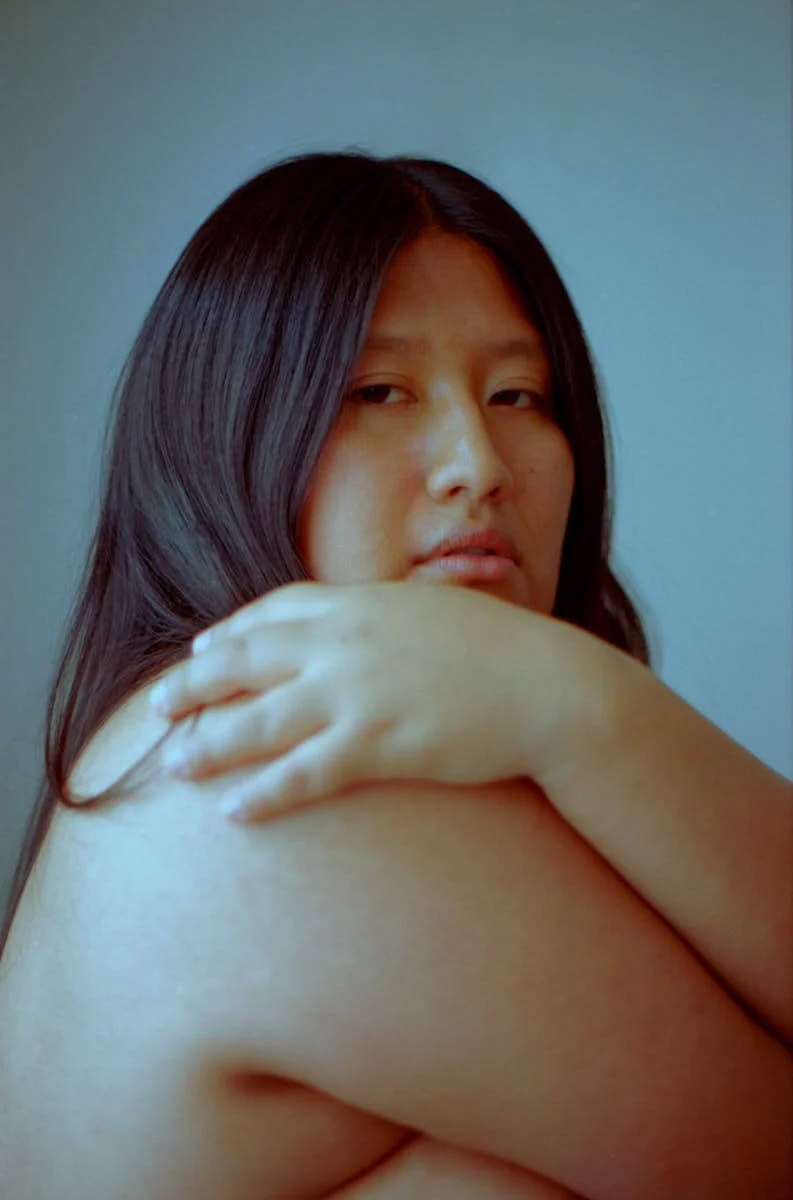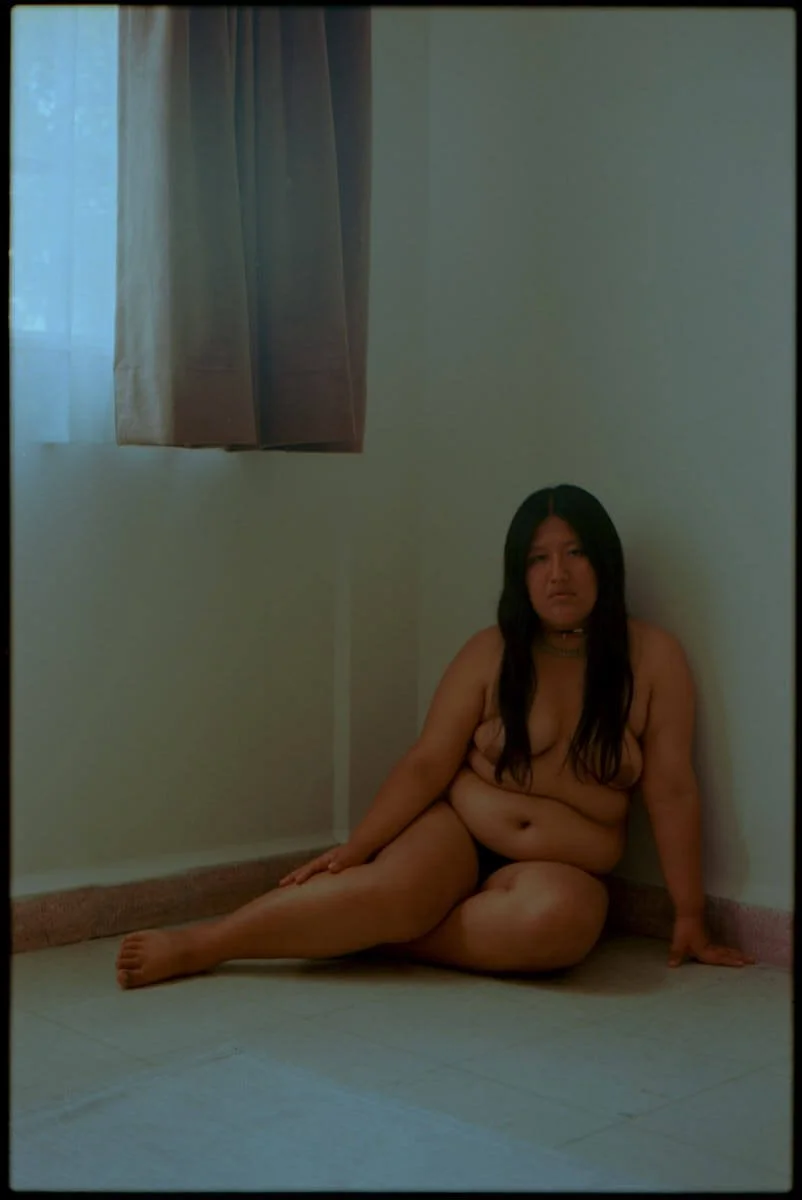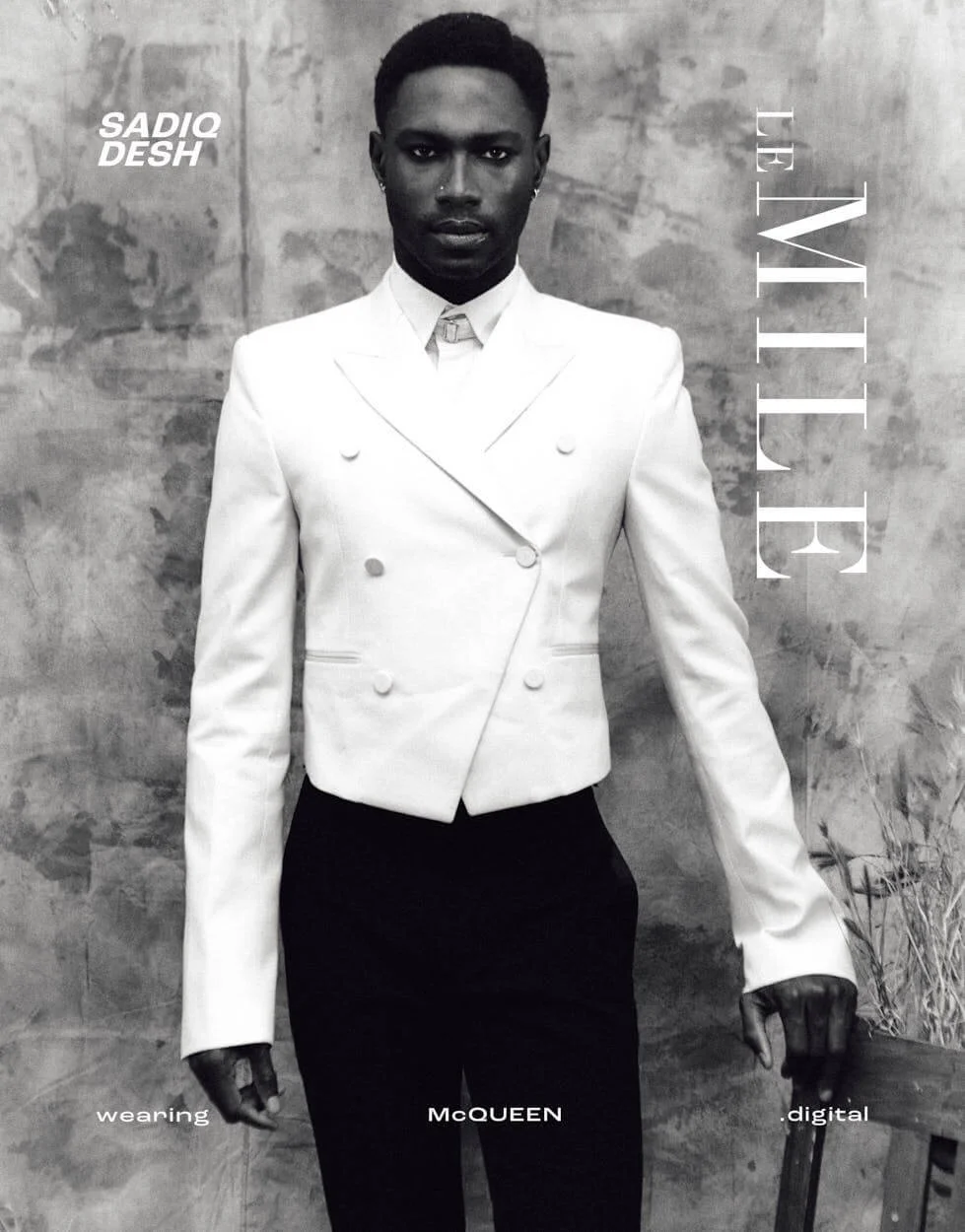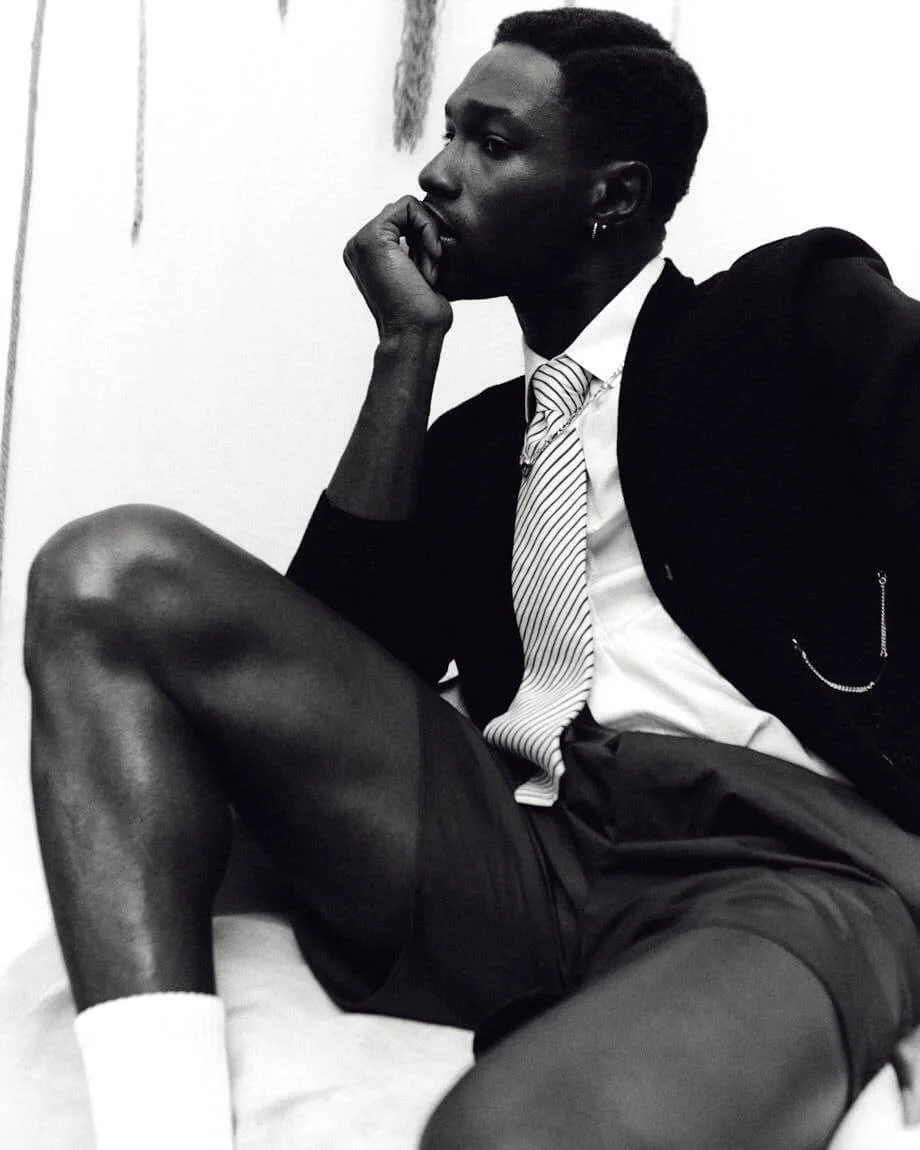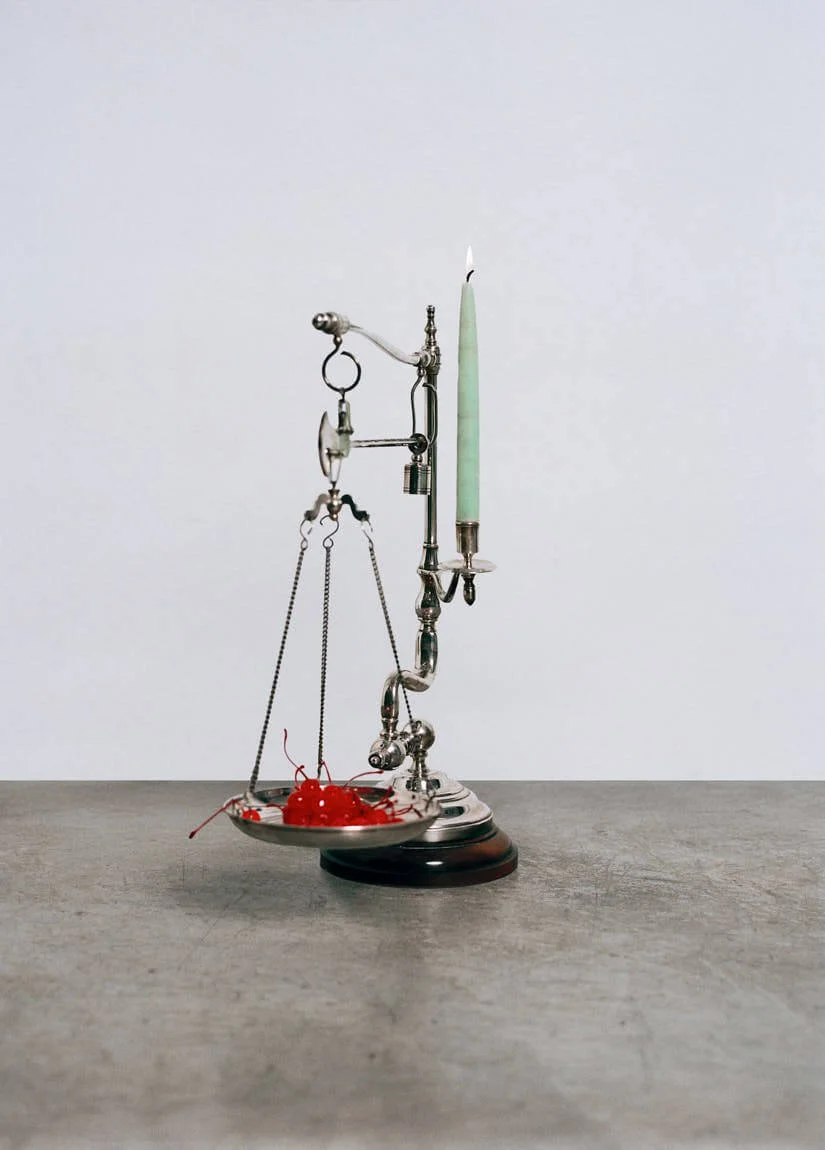IN HER ELEMENT
*Alla Kostromichova on Beauty and the Energy That Endures
interview + written SARA DOUEDARI
There is a certain intensity that follows her — not loud, but unmistakably present.
In conversation, she moves with the same awareness she brings on set: attentive, sincere, and luminous without effort. Alla Kostromichova has built a career on resilience, discipline, instinct — and a deep respect for the creative process. Here, she speaks about growth, purpose, and the rare alignment that occurs when the right people meet on set.
Alla wears a dress by DIEGO GULLIEN and shoes by EMPTY BEHAVIOR
“When I’m given real artistic freedom — not just showing garments, but becoming something — that’s when the magic happens.”
Alla Kostromichova speaks with Sara Douedari
for LE MILE .Digital
dress by DIEGO GULLIEN
lla wears a dress by R.L.E and shoes by EMPTY BEHAVIOR
Sara Douedari
How has growing up in Ukraine shaped the way you move through the fashion world?
Alla Kostromichova
I grew up in a small city on the Crimean seashore, in a 40-square-meter apartment with my parents and grandfather. I was born in the USSR and came of age in the 90s, when life was extremely difficult. There was uncertainty, chaos, and very little stability. That environment taught me to rely on myself early. It made me adaptable and alert — which is exactly what you need to survive in fashion.
We didn’t have fashion magazines then — only Burda or Make It Yourself, which people shared because they were impossible to find. I remember looking at those models like they were angels from another universe. I didn’t dare believe I could belong there. My father was a musician, sometimes he painted, and we always had music playing at home — Pavarotti, Joe Cocker — even if it was recorded in terrible quality. When he passed away, I was 13, and I started working during every school vacation. Hard work became part of me. So when I entered fashion and people complained about 14-hour days, I felt lucky — because I knew what real struggle looked like.
Growing up like that made me humble, hungry, appreciative, ambitious. And, yes — I wanted to prove something. To others. But also to myself..
What was the first moment you realized your career would truly become international?
The beginning of my career was mostly rejection. I had been seen by major agencies many times — and always heard no. I walked Armani in Milan, but nothing followed. I finished university with a degree in medical engineering, but I knew I couldn’t live a 9-to-5 lab life. Two weeks after graduation, I went to Paris — to a small, unknown agency. Months later, I was confirmed as a fit model at Givenchy. Riccardo Tisci was preparing a couture collection. I spent long days in the atelier, watching a collection being created from scratch. One day, I was standing there in a gown they were adjusting on me. The window behind me opened slightly and I saw the Eiffel Tower reflected in the mirror — and then it began to sparkle. My reflection and the tower side by side.
In that moment, a quiet voice inside me said: You did it. What changed was simple: I felt relief. Relief that I wouldn’t have to return to the uncertainty I came from. Relief that I could finally help my mother. Those were the two things that mattered most..
Fashion demands constant evolution. What has helped you stay resilient — and relevant?
I think there are several personalities inside me — and one of them is a wild, creative performer who comes alive on set. When I’m given real artistic freedom — not just showing garments, but becoming something — that’s when the magic happens. It’s an exchange of creative energy, and for me, that exchange is one of the core values of my life.
Not every model can bring that slightly strange, almost otherworldly, performative energy. But when I’m on set, I feel alive. People can sense that. Discipline, professionalism, and love for the craft matter — but that energy is what keeps me here. And I felt that deeply during the shoot with Stefan. At one moment, it was like we tuned into the same frequency — instantly. That alignment is rare, and you can see it in the images.
Alla wears a headpiece by JEROME BLIN, bottoms by WOLFORD, accessories by MEL + MARIE, and shoes by RAMI AL ALI
headpiece by JEROME BLIN
Through Ukraine’s Next Top Model, you became a mentor to new talent. How did teaching change you?
It changed me completely. We filmed seven seasons, and during that time I gained a large audience — with that comes responsibility. Around the same time, I opened my mother agency KModels. Teaching felt natural to me — as a child, I used to “play school” with my dolls.
Later, I started a summer model camp for teenage girls — not only to teach modeling skills, but to help them build self-esteem. Talking to them, supporting them — that opened a new part of me. It gave my career a deeper purpose. Unfortunately, the camp had to close during Covid, and the war ended it completely. But that experience made me stronger and more responsible — and it showed me the impact my voice can have.
Today, when you think about beauty, what matters more — image or presence?
Presence. Sincerity. Depth. We live in a world where content is everywhere. Beauty that is only visual doesn’t mean much anymore. What matters to me is the feeling behind it — a real connection.
In my agency, I see beauty in potential — in watching girls grow into strong, independent, self-aware women. In coaching, I see beauty when someone allows themselves to be authentic, vulnerable, real.
A truly beautiful person is someone who gives themselves the freedom to be sincere. Not perfect — sincere. Especially now, with AI and everything becoming more artificial, the value of real human presence has only grown.For me, the most beautiful thing is sincerity.
Alla wears a headpiece by SANDRINE BOURGMODISTE, a top by MAISON MOGHARAB, and shoes by RAMI AL ALI
talent ALLA KOSTROMICHOVA
all Images (c) LE MILE / Stefan Kokovic
Alla wears earrings and bracelets by MELISSA + MARIE and a dress by JUANA MARTIN
“A truly beautiful person is someone who gives themselves the freedom to be sincere. Not perfect — sincere.”
Alla Kostromichova speaks with Sara Douedari
for LE MILE .Digital
seen STEFAN KOKOVIC
hair + make up MARYSE KANARELLIS
stylist STEPHEN BARRINGTON via STUDIO CTRL
bts ANGEL FERRER BOSCAN
photo assistant YANA LAUMONIER
beauty assistant BEATRICE ROSE FATIER
interview SARA DOUEDARI










